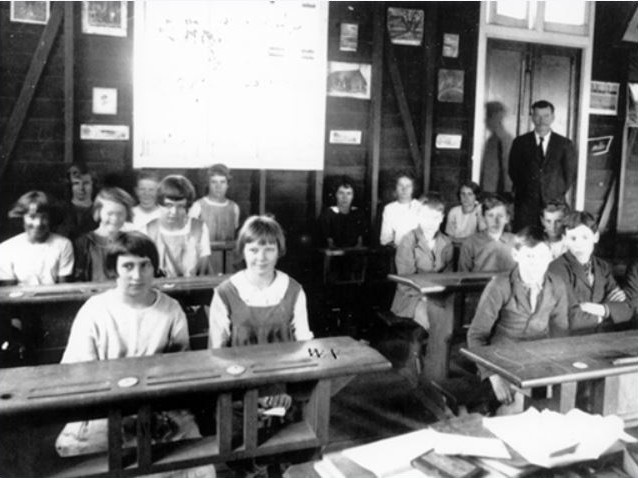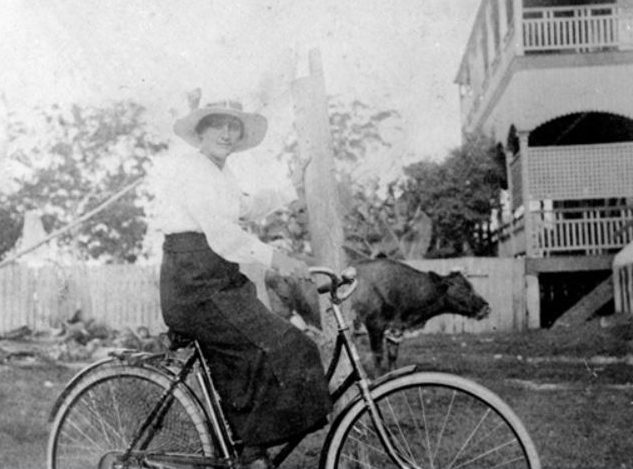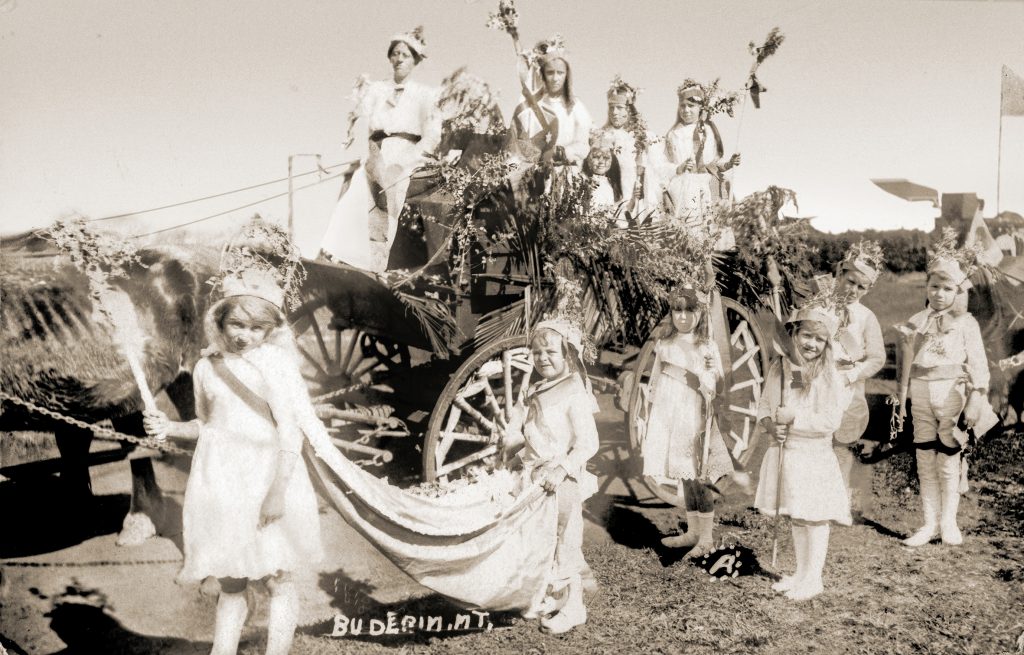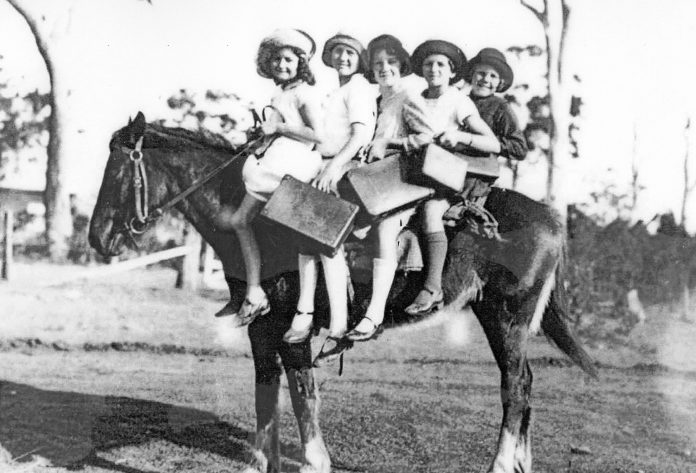Who remembers being stood in the corner facing the wall if you talked? Perhaps you can recall marching into the classroom or sharing a tin pannikin of water at the school tank.
In the early days, children sat in rows on wooden benches at long desks facing the teacher.
Slates and slate pencils were the basic equipment for the younger students. The advantage of slates over paper was that they could be wiped clean and used again and again.
Children had to bring a cloth or sponge to school to clean the slate so they could begin again, but often some would use their own spit and their sleeve cuff!
As pupils became more proficient, school ‘copybooks’ were provided for writing practice.

They used nibbed pens and blotting paper, which was used to absorb excess ink and dry the surface of the work to avoid smudges. Later, ball point pens took over from pen and ink style writing.
Break-up and sports days were attended by the whole community and a school picnic to the river or beach was met with excitement by the children of the district.
Teachers were posted to small country bush schools in places they had never heard of and there was a high teacher turnover at remote schools as many found it quite challenging.
Hunchy School, which opened in 1924, had 19 head teachers in the 46 years it existed.

Teachers had to find lodgings in the area, perhaps at a farmhouse, which if they were city bred could be pretty daunting.
If staying some distance from the school, they might have to travel by horse over rough bush tracks or even cross a river by boat. Falls from horses were not uncommon, but as roads improved the journeys to school became less hazardous.
Getting to and from school was an adventure for the children and teachers alike. For many years schools allocated a portion of the grounds to be set aside for a horse or pony paddock.
When the younger children started school, mothers would walk them part way along the bush roads. Those reluctant to go would wait until mother had turned her back and then follow her home at a distance.

Memories of Mons School
Mons was a fertile fruit growing area close to Forest Glen.
When the Mons school first opened its doors on February 7, 1916, there were five families living close by.
These families were mainly banana and citrus fruit farmers and their surnames were Dahl, Rowland, Moody, Vise and Wordie.
There were 11 students enrolled in the first week and within a month this had grown to 25 students.
Mons was the only school between Woombye and Buderim.
In 1907, prior to the school opening, fruit farmer Ambrose Vise, who had migrated from Lincolnshire, England in 1888, moved to the district.
He purchased 54 acres on a ridge to the west of Buderim in the area now known as Mons.
Ambrose Vise led a community effort for over two years to obtain permission to build the country school.
He had written letters to the Department of Public Instruction of Queensland highlighting the need for the school.

Ambrose Vise had an interview with the minister, Mr Haracre, and an inspector, Mr Benbow, who travelled to view the site to check its suitability.
These actions and a determined effort by the Mons School building committee made their venture a success.
Three acres of land was found suitable for the school needs and then the local volunteers went to work.
The acreage was a rough bush block to start with.
The parents and residents of the Mons district laboured to fence the school grounds and all the children of Mons helped clear the three acres.
There was much local interest and as well as fencing, the parents built a tennis court with a high fence around it and four racquets were also provided for the children to learn to play tennis.
The school was constructed by builder Mr Westray with the local residents as his labourers.
Three sides of the school were open and canvas blinds were used for protection from the elements.
The Mons School closed permanently in December 1974 and on September 17, 1975, the school building was officially re-opened by Cr De Vere as the venue for the Mons Playgroup.
Thanks to Sunshine Coast Council’s Heritage Library Officers for the words and Picture Sunshine Coast for the images.
A generation of milk drinkers
Anyone who went to school from the 1950s to 1970s will have vivid memories of being made to drink milk every day at school.
In 1950, the Menzies government introduced the national free milk scheme in a bid to improve the health of Australian children, but it inadvertently put generations of Australians off drinking milk.
Every morning, crates of milk, first in quarter-pint bottles, then in triangular cardboard packs, would be delivered to school playgrounds.
They were left to sit in the sun until lunchtime, when the milk would be warm and curdled, with big globs of cream floating on the top.
There were no excuses – everyone had to drink it. The scheme was ended in 1973 by the Whitlam government, when it was discovered it had a marginal, if any, effect on the health of children.
Love nostalgia? So do we. Help keep more great Coast memories alive by subscribing to our free daily news feed. Go to Subscribe at the top of this story and add your name and email. It’s that simple.





